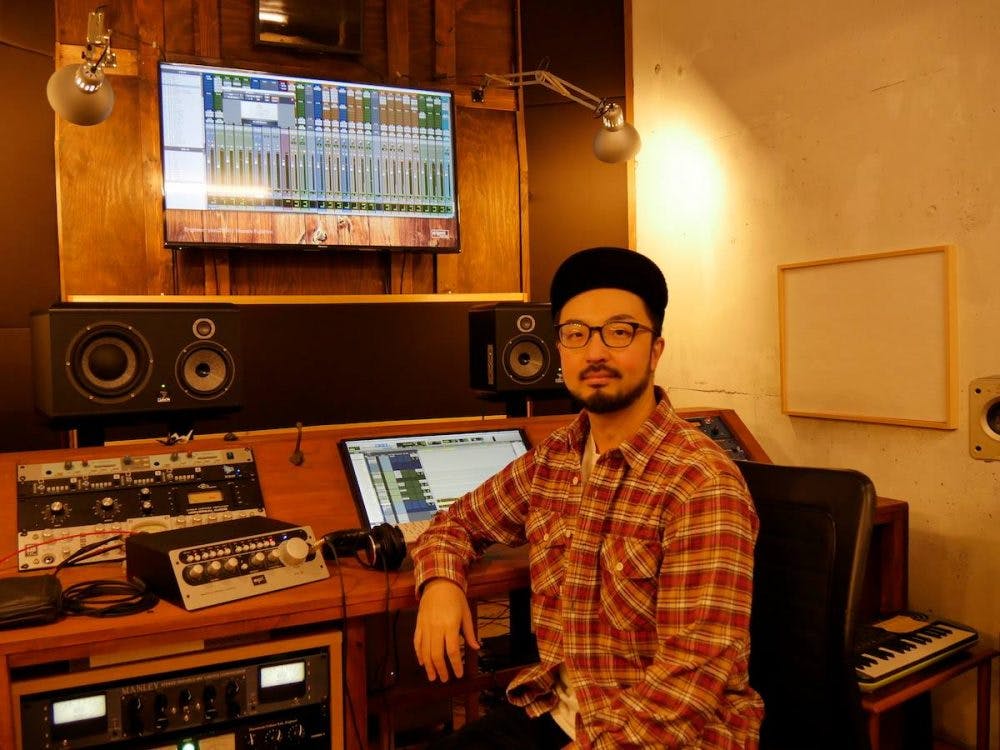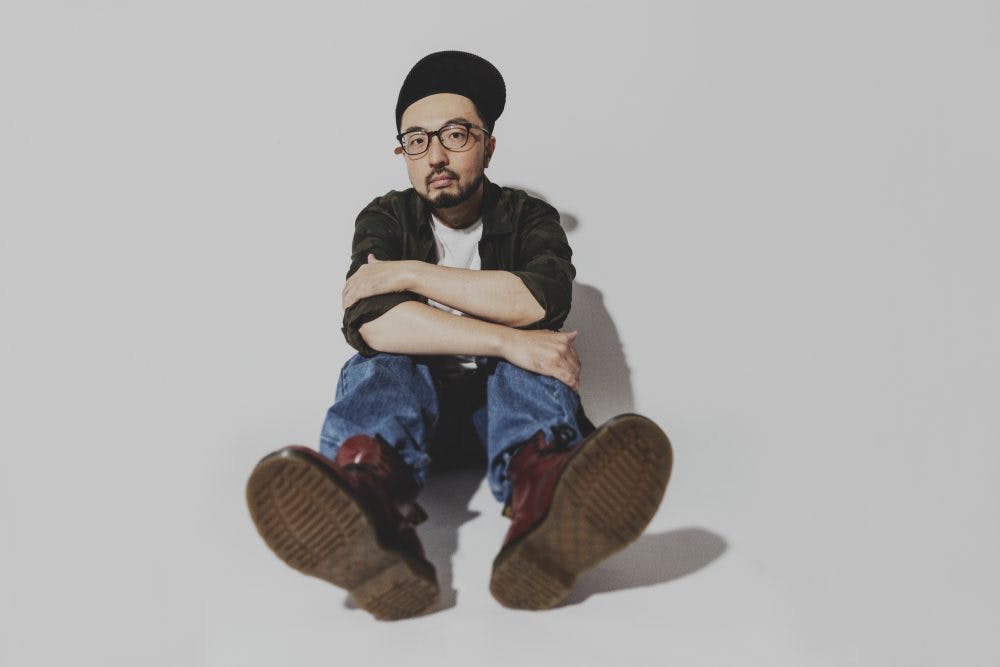Shingo Suzuki is a composer, producer, and bass player from Tokyo, Japan, where he spends much of his time writing and producing in his modest home studio. Shingo, as an artist, has released one solo record and is working on a follow-up. His band, Ovall, has released several of its own albums. Besides these endeavors, Shingo composes, produces, and arranges music for other artists as well as TV, film, and advertising projects.
Shingo considers himself a track-maker, in that he produces his music using Logic Pro and adds live instruments as needed. In the case of his trio Ovall, they build their music on hip-hop beats and then add live flavors of jazz, soul, and rock to create their unique fusion. The success of the group has led each of the members into successful solo careers as producers and musicians. The group continues to be a foundation for the members and they often reunite to work on Ovall projects, even amidst their busy solo careers.
Shingo prefers to work in the comfort of his home studio, based around Logic Pro and his beloved Focal monitors. A typical production project for him involves creating or receiving a demo track for a song and then building the demo into a finished production using soft-synths, samples, and live-playing when its called for. Shingo plays most of the parts himself, including bass, keyboards, and guitar. Shingo’s studio boasts a Rhodes suitcase and Moog synthesizer. For advertising work, the work usually starts and ends in his private studio, while larger projects often utilize outside studios for instrumental tracking, mixing, and mastering.
We spoke to Shingo about his style and workflow and he shared some information about his setup and production style. “The way I produce music is a mix of live performance, programming, and sampling.” Shingo continues, “I aim for a hybrid sound, created with a hip-hop feel and played from a musician’s point-of-view.”
Shingo credits Meshell Ndegeocello as a big musical influence and enjoys interacting and building relationships with other musicians and artists. While his studio covers just ten square meters, he has installed acoustic treatment to control first-reflections and he utilizes Sonarworks Reference 4 to maintain a dependable monitoring environment. “My studio is where I can be most relaxed and focused, so I try to keep it comfortable rather than to focus on specifications as a studio,” Shingo says. “Since the studio has no subwoofer installed, it is rather difficult to check sub lows, which you have to deal with considering Japan’s housing situation, but If I want to check the lows more closely, I use our label’s studio or outside studios, where you can turn up the volume and listen to it as much as you want.”

Here are some details about Shingo’s studio setup:
DAW: “I have always used Logic Pro”
Interface: Apogee Ensemble Thunderbolt
Monitors: Focal Shape 50s and Audio Technica ATH-M50. Shingo describes the Focals as, “…a sealed enclosure [passive radiator] type, so it’s easier to monitor because the sound is well-balanced whether you turn it up or down.” About the M50 headphones, he says, “The sound is a bit focused on highs and lows with good depth, and they fit my ears a little better than others, so I don’t get tired even if I use them for a long time.”
Microphones: Neuman U87ai, Audio Technica AT4040, Shure SM57 and 58
Preamps: Focusrite ISA Two preamp
DI boxes: Avalon U5 (discrete) and Summit TD-100 (tube) active instrument DIs
Compressor: Summit TLA50 Tube Leveling Amp
Favorite Plugins: Logic’s compressors and guitar amps, PSP Vintage Warmer, SPL Transient Designer Pus, Waves Renaissance and One Knob plugins. And, “Sonarworks is the first plug-in that I stick to the slot when I start up Logic.”
Other favorites: My cat, Mugi, and coffee brewed in a French press!
Advice to others: “Cherish every encounter with people, it could be once-in-a-lifetime.”
More information can be found on Shingo’s website http://shingosuzuki.com




